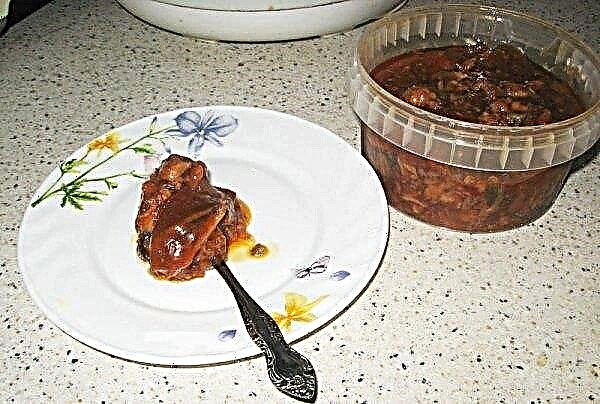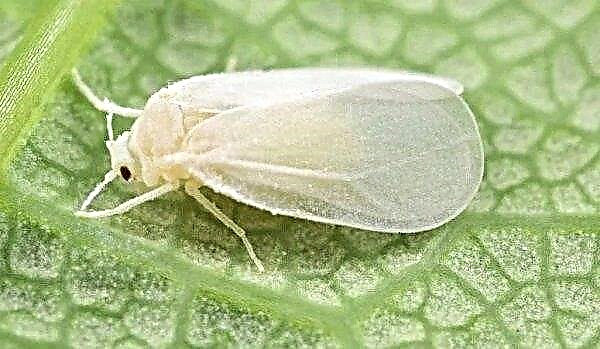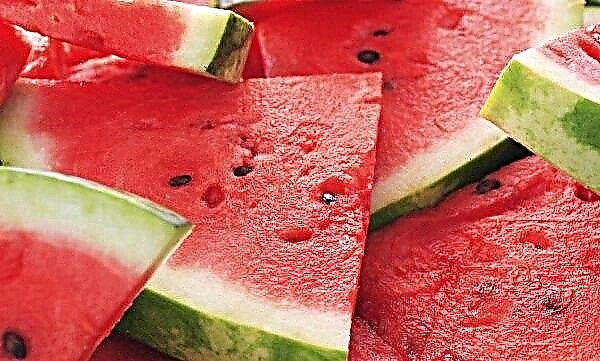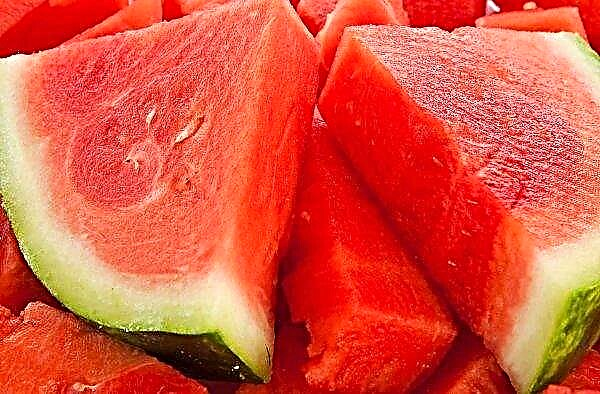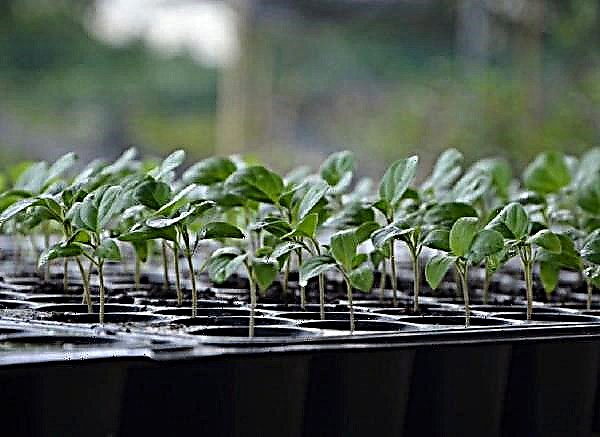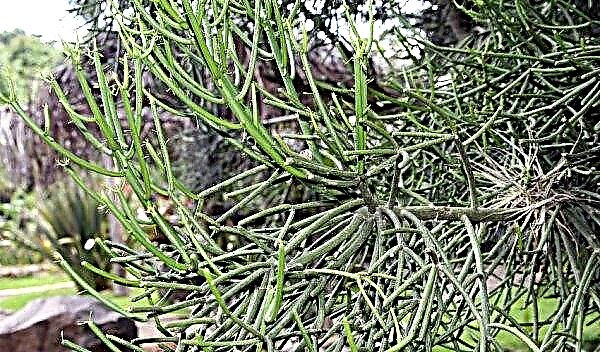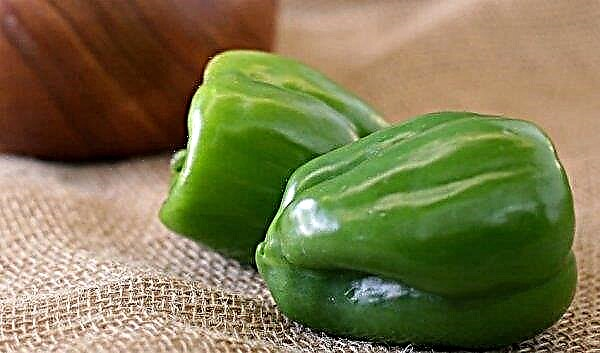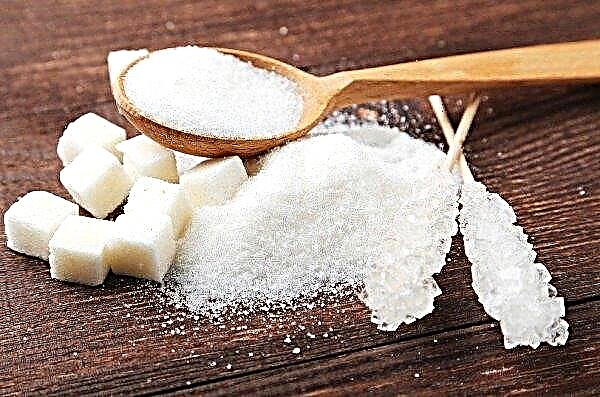Before planting cucumbers, you need to properly prepare the garden in both open and closed ground. The quality of the crop, as well as the immunity of plants, depends on what soil the seedlings will be planted in. About how to properly carry out preparatory work with the soil, and how to process it - will be discussed below.
Why prepare the soil for cucumbers
Stages of soil preparation should not be neglected. This is one of the most basic agricultural practices that helps eliminate parasites and fungal spores. The fact is that most harmful microorganisms settle and even survive frosts in the upper soil layer. When loosening, digging the soil, the habitual habitat of the parasites is destroyed, and they die.
Did you know? If you wipe the bathroom mirror with the pulp of a fresh cucumber, it will not fog up.
In addition to the disinfection nature, soil preparation works have the goal of enrichment with nutrients. During the season, the soil is depleted, so the plants will simply have nothing to eat during the period of active development. As a result, the crop will be scarce and greatly lose in quality.
At the time of soil preparation determine the level of acidity. This point is also very important, because cucumbers will not bear fruit in an acidic environment. The optimal indicator should be from 5 to 7 pH. If the acidity level does not correspond to the indicated value, then it is corrected by introducing deoxidizers or elements, on the contrary, increasing acidity. Determination of soil acidity using litmus paper
Determination of soil acidity using litmus paper
Soil structure is another important indicator affecting the growth and development of cucumber crops. Plants poorly bear fruit in heavy clay soils. If such a soil is on the site, then it is necessary to carry out work in advance to improve its structural composition by adding sand, peat and other substances that add friability.
Standards for preparing land for cucumbers in a greenhouse
When cultivating cucumbers in greenhouses, you need to carefully approach not only the preparation of the soil, but also to the structure itself. Regardless of whether the portable greenhouse is on the site or stationary, the walls of the room must be decontaminated. Profiles, polycarbonate / film are subject to processing. Outside, the structure is washed with chlorine-containing substances. You can use the usual whiteness. It is bred with water in a proportion of 1:10.
Before you start processing indoors, you need to remove it, take out all the garden tools, boxes, etc. The simplest option is to use the Pawn-S smoke bombs.
Checkers are placed at an equal distance from each other around the entire perimeter of the greenhouse, and then set fire to the wick, starting from the one farthest from the door. Then the room is sealed. If it is equipped with ventilation, then it must be turned off. In a sealed state, the room is left for 8-10 hours.
 After treatment, air the greenhouse for 2 weeks
After treatment, air the greenhouse for 2 weeks
It is also possible to treat internal surfaces from a spray tank. For liquid treatments, you can use a 3% solution of copper sulfate or Fitosporin (diluted in a proportion of 5:10). You can also use "Fundazolum" (30 g per 10 liters of water).
Important! When carrying out disinfecting treatments inside the greenhouse, be sure to use eye and respiratory protective equipment. Clothes should be selected tightly fitting to the body, with a long sleeve and a high collar.
In the autumn period
The main problem of the greenhouse is the relatively small area of food for plants. In this regard, it is not always possible to comply with crop rotation rules. In the case of a mobile structure, you can simply rearrange it to another place, having previously prepared the site in the usual way. In the case of a stationary greenhouse, a partial or complete change of soil is carried out.
With a partial change of soil, immediately after harvesting, the premises are disinfected. The soil is dug up on a bayonet shovel, and then sprinkled with a layer of bleach. The remaining work is carried out in the spring.
In shelving greenhouses, a complete change of waste soil in the fall is carried out. First, a layer of 10 cm of cow manure is placed in empty boxes, then a layer of soil of the same thickness. After 3-5 days, a layer of soil (15 cm) is added.
In the spring
In the spring, a soil layer of 10–20 cm is removed. The site is dug to a depth of 25 cm.
To increase the fruitfulness of plants, in the spring in the greenhouses carry out the following manipulations:
- In place of the removed soil layer lay 30-40 cm of manure.
- Depressions are formed in it at equal distances.
- Pour 1 liter of boiling water into the recesses - this is necessary to activate the process of decay, which will contribute to the release of heat.
- After 5 days, a mixture of turf soil, sawdust, sand and humus is laid on top of the manure (2: 1: 1: 2).
 When using the above technique, after laying the fertile soil layer, you can immediately sow the seeds of cucumbers or plant seedlings. The presence of a thick manure layer will provide the optimal microclimate in the garden for the growth and development of the crop
When using the above technique, after laying the fertile soil layer, you can immediately sow the seeds of cucumbers or plant seedlings. The presence of a thick manure layer will provide the optimal microclimate in the garden for the growth and development of the crop
You can get by with the standard option of replacing the soil layer with a fertile substrate, consisting of turf soil, peat, sand and humus with field soil (2: 1: 1: 1). A number of mineral components are immediately added to this composition:
- 15 g of potassium sulfate;
- 20 g of superphosphate;
- 10 g of ammonium nitrate.
Did you know? In ancient Rome, cucumbers were used as a remedy for scorpion bites. The victim must have entered them in the diet and applied fetal rings to the affected area.
Outdoor preparation
The soil on the site begins to be prepared in the fall, and in the spring these works continue. To begin with, they select a site well lit by the sun, without a draft. When choosing an area for cucumbers, crop rotation rules are taken into account. Culture is not planted after:
- zucchini;
- squash;
- eggplant;
- Tomatoes
- potatoes.

Fall
At this stage, the area is first cleaned of plant debris, the roots are necessarily removed. All vegetation collected on the site is burned. Then the ash from the fire can be used as a disinfectant and fertilizer.
Next, a deep cultivation is carried out. This can be done with an ordinary shovel, digging onto a bayonet. This method of cultivation is suitable in the presence of loose, light soil on the site. Heavy soils need to be dug to a great depth (40 cm). To do this, you need a cultivator.
Immediately after the first digging, the soil is disinfected. A week later, for repeated digging to a depth of 30 cm, 6-10 kg of fresh manure is applied to each 1 m² (light fertilizer is less on light, more fertilizer on heavy). With increased acidity of the soil, instead of manure, 600 g of wood ash or 400 g of dolomite flour and 10 kg of compost are added to each 1 m².
Structuring is carried out on heavy soils, which implies application for each 1 m² according to:
- 20 kg of manure;
- 10 kg of peat;
- 10 kg of sand.

You can increase the efficiency of all the above manipulations by mulching the fertile layer. For this, sawdust, straw, sunflower husk and grass are combined in equal proportions. Lay the mulch in layers of 3-5 cm high, pouring them into the soil. Just make 2-3 layers. By spring, part of the organics will have time to decompose in the soil, which will increase its fertility.
In the spring
In early spring, another cultivation is carried out to a depth of 20–25 cm.
At the end of May, at about 20 dates, it is necessary to feed the soil with minerals. For each 1 m²:
- 15 g of ammonium nitrate;
- 20 g of superphosphate;
- 15 g of potassium salt (if deoxidants in the form of dolomite flour or wood ash were not used in the fall).
Important! Before planting cucumber seedlings, carefully ensure that weeds do not appear. As soon as such vegetation begins to break through, immediately remove it, otherwise the effectiveness of all ongoing manipulations on preparation will decrease and the risk of reproduction of pests will increase.
Fertilize in moist soil. If the spring turned out to be arid, the plot must first be watered (20 liters of water per 1 m²). Fertilize to a depth of 10 cm. After that, the soil is leveled with a rake.
What are the means of disinfecting the soil
To carry out soil disinfection, a variety of means are used. Among the most commonly used:
- Blue vitriol - it is applied in the autumn period in 3% concentration after the first cultivation of the soil. Consumption - 1 liter per 1 m² of soil. The product effectively fights pathogens of various fungal diseases, as well as pests.

- Manganese - used in 1% concentration. 1 g of substance is added to 1 liter of water. Consumption per 1 m² is 1 liter of the finished solution. It can be used both in spring and autumn.

- Fitosporin - applied in a proportion of 5:10 in powder form, or 1.5 ml of a liquid substance per 10 liters of water. Consumption - 10 l of working solution per 1 m². It is used in the fall after the first cultivation or in the spring, a week before planting.

- "Emochka-Original" - 3 liters of substance are added to 30 liters of water. It can be used in spring and autumn. Consumption - 30 liters per 100 m².
- Fundazole - use 30 g of powder per 10 l of water. This amount is enough to process 1 m². It is applied 1 time, in the spring or in the fall.

How to cultivate the land after harvesting cucumbers
After the cultivation of cucumbers, the soil must be treated with preparations that suppress the reproduction of pathogenic bacteria and parasites. You can use the drug "Oksikhom". The solution is made at 2% concentration. Processing is performed according to the instructions.
It is allowed to re-till the soil with this and similar preparations also in the spring. But it is worth considering that in addition to pathogenic microflora, such funds destroy and useful. In this regard, in spring it is better to use products from the bioactive series (Fitosporin, Emochka).
Did you know? The cucumber in the botanical classification is pumpkin.
Immediately after harvesting cucumbers, you can also use mineral fertilizers with a high nitrogen content - urea, nitrophos. They also have a disinfecting effect. To 20 liters of water add 6 tbsp. l one or another means, and then carry out watering. This amount is enough to process 1 m² of soil.

Preparing the soil in a greenhouse or in open ground before planting cucumbers is the main agricultural technique that provides protection against pathogenic bacteria, parasites, and also increases productivity. They begin to conduct it in the fall, immediately after harvesting, and finish in the spring.





